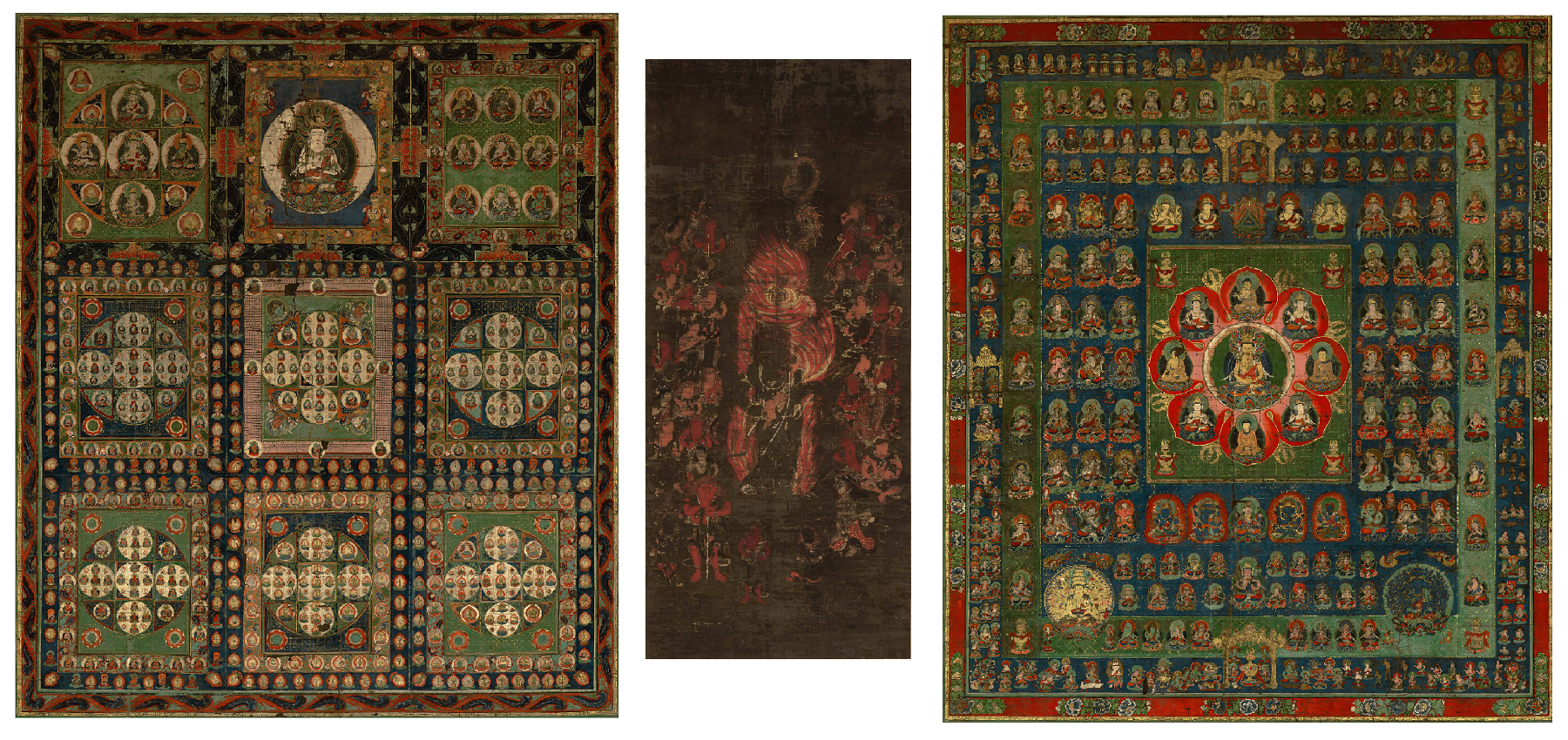本文
Color paintings on silk depicting Fudō Myōō (the Immovable One) with 36 attendants (child acolytes), flanked by the Mandalas of the Two Worlds. Comprises three scrolls
Color paintings on silk depicting Fudō Myōō (the Immovable One) with 36 attendants (child acolytes), flanked by the Mandalas of the Two Worlds. Comprises three scrolls

(From left to right) Diamond Realm Mandala, Fudō Myōō with 36 attendants, and Womb Realm Mandala.
Nationally designated Important Cultural Property (designated 1901)
Made: Early Muromachi period (late 14th century – early 15 th century)
Hōkōji temple, Kashino, Ushimado
Color on silk, hanging scroll
Dimensions: 134.0×59.4 cm (middle scroll) 222.0×157.0cm each (right and left scrolls)
The center scroll features Fudō Myōō standing atop a rock and set against a roiling flame. He is surrounded by other symbolic Buddhist figures, such as the dragon Kurikara, depicted as is so often the case wrapped around a sword, as well as many attendants, including the two child acolytes Kongara and Seitaka, which have been drawn larger than the other attendants. As in most images Fudō Myōō is generally either represented alone, flanked just by Kongara and Seitaka, or depicted alongside at most 8 child acolytes, this particular painting has a very rare composition.
The other two scrolls form the mandala of the two worlds, depicting the ‘Diamond World’ and the ‘Womb World’. Interestingly, these two evidence a different drawing style and richer use of colour than the center scroll. Not only this, but the three scrolls are not all equal in size, leading some to suggest that they were possibly not originally a set. Despite this uncertainty, they have been designated together as a single Important Cultural Property.
Based on the style employed in the central scroll featuring Fudō Myōō and his attendants, it seems likely that these images were painted at some point during the late 14th – early 15th centuries.





